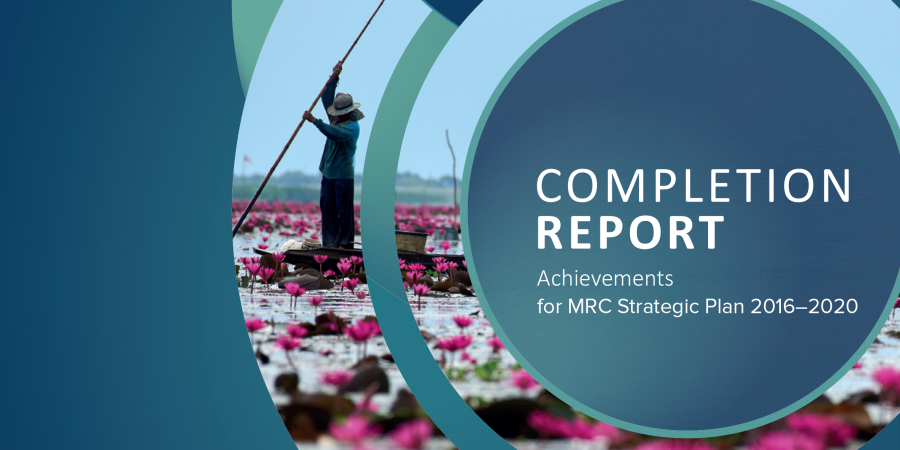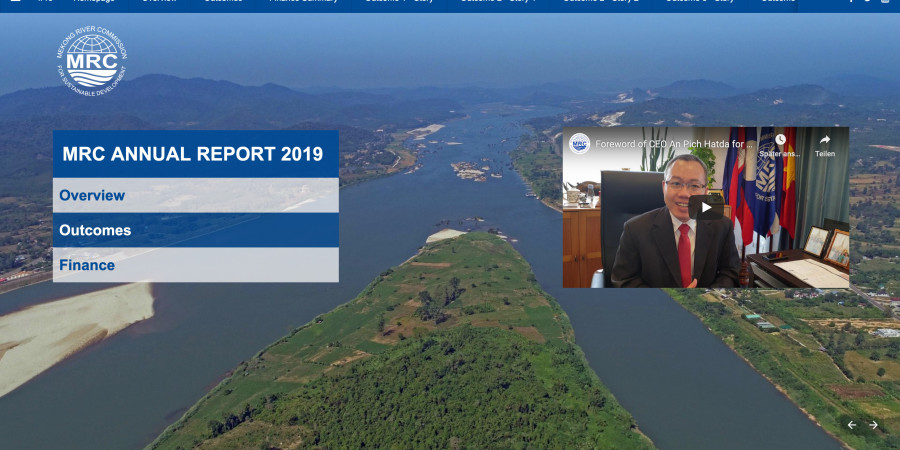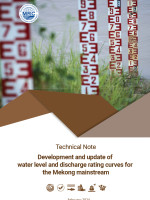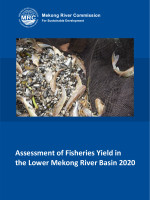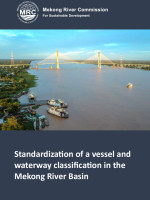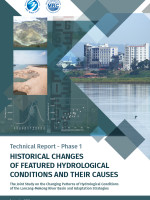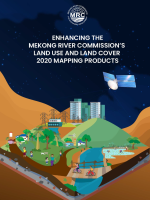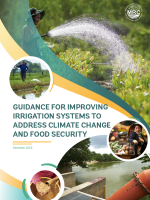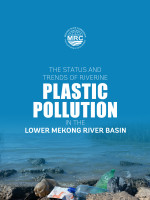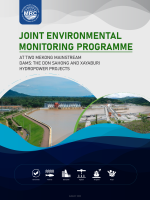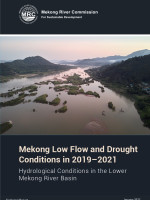Reports
Interactive Report
Completion Report for the Mekong River Commission’s Strategic Plan 2016–2020
The Completion Report covers the key achievements of the Mekong River Commission (MRC) in implementing the Strategic Plan 2016–2020 (SP 2016–2020), which identified four key result areas, seven outcomes, 44 outputs, 169 activities to be implemented during its five-year period. The MRC’s implementation of the SP 2016–2020 through its Annual Work Plans over 2016–2020, resulted in the completion or near completion of most of the planned outputs, 23 of which were completed, 15 were not completed or incomplete, and six were discontinued. The 15 incomplete outputs were mostly nearly completed with completion rates at or above 90%.
Interactive Report
MRC Annual Report 2019
The Annual Report provides key MRC achievements including a summarised financial report.
Development and update of water level and discharge rating curves for the Mekong mainstream
This technical note is an update of analysis of the rating curves for mainstream and tributaries of the Mekong River for 2009-2012, published in 2013, discussing the approach and methodology of rating curve establishment. The current publication underscores the Mekong River Commission Secretariat’s (MRCS) commitment to advancing integrated data management. The MRCS adopts the Time Series Management Software, AQUARIUS, to migrate rating curve development. This shift aims to establish a centralised, easily maintainable system, ensuring a reliable source of accurate water data. The transition of rating curve development to AQUARIUS is anticipated to enhance the efficiency, accuracy, and defensibility of water data management processes.
Download | DOI: 10.52107/mrc.bjv4xx | Published on: 20 Feb 2024 | Language: English
Assessment of fisheries yield in the Lower Mekong River Basin 2020
MRC conducts periodic assessments of fisheries yield in different regions of the Lower Mekong Basin ):MB) to inform policy decisions and understand trends in catches and the value of aquatic living resources over time. The assessments conducted in 2020 suggest that the annual finfish yield from the LMB falls within the range of 1.51 to 1.71 million tonnes, while the harvest of other aquatic animals (OAA) is approximately 443,000 tons. These findings reveal a considerable decline in catches, amounting to approximately 25-30%, compared to the assessments conducted in 2000 and 2010. The estimated value of the fish catch varies from USD 7.13 billion to USD 8.37 billion annually. In addition, the estimated value of the OAA harvest is approximately USD 1.13 billion.
Download | DOI: 10.52107/mrc.bivw7w | Published on: 05 Feb 2024 | Language: English
Standardization of a vessel and waterway classification in the Mekong River Basin
The "Standardize vessel and waterway classifications" is to update and harmonize different standards, rules, and regulations to uniform common standards for the development and liberalization of waterway transport on the Mekong River System. It involves analyzing technical and operational criteria for vessel classification and proposing standardized either one waterway classifications for the whole Mekong River Basin or two classifications for the upper and lower parts. It develops a proposal for waterway classification for each stretch of the Mekong River, its tributaries, and canals. In addition, a comprehensive set of regulations for vessel and waterway classification in the Mekong River Basin is prepared for implementation in the four MRC Member Countries.
Download | DOI: 10.52107/mrc.bgo9gq | Published on: 29 Dec 2023 | Language: English
Technical Report – Phase 1 of the Joint study on the Changing Patterns of Hydrological Conditions of the Lancang-Mekong River Basin and Adaptation Strategies
This is the 1st phase report of the Joint Study on the Changing Pattern of Hydrological Conditions of the Lancang-Mekong River Basin and Adaptation Strategies, conducted by the MRC and LMC Water Center. The report identifies two key factors that contribute to hydrological changes in the LMB. First are natural factors, including precipitation patterns, evaporation rates, soil properties and topography. Second are human activities, such as infrastructure development, water management, land cover and land-use changes. These two factors interact and influence the amount, timing and water distribution within the Basin.
Download | DOI: 10.52107/mrc.bd0zhw | Published on: 05 Oct 2023 | Language: English
Enhancing the MRC Land Use and Land Cover 2020 Mapping Products
This report summarizes the process starting from the background of the project, field data collection, and most importantly, the process of applying the Earth Observation technology via machine learning using the Google Earth Engine platform and the approach agreed by the expert group from the Member Countries to update the land cover and land use map of 2020 for the Lower Mekong Basin region.
Download | DOI: 10.52107/mrc.aqrsbr | Published on: 08 Jun 2023 | Language: English
Guidance for Improving Irrigation Systems to Address Climate Change and Food Security
This guidance gives a preliminary guidance for applicable irrigation techniques and technologies in the Lower Mekong Basin (LMB). This guidance was developed for the MRC Member Countries to use for mitigating impacts of climate change and natural disasters, addressing problems in irrigation sector, and improving irrigation systems in the LMB. This guidance also indicates the defects of irrigation techniques and technologies being utilized in the LMB and suggests where improvements could be made for better utilization.
Download | DOI: 10.52107/mrc.ajutos | Published on: 21 Dec 2022 | Language: English
The status and trends of riverine plastic pollution in the Lower Mekong River Basin
This report explains the status and trends of plastic waste pollution in the Lower Mekong River Basin from the perspectives of plastic pollution itself as well as the frameworks and capacity of each Member Country to address the issues of plastic pollution. The report estimates that in 2020, its four countries had produced about 8 million tons of plastic waste – of which, some 70% to 90% were plastic bottles, plastic bags and Styrofoam. Yet this debris does more than adversely affect the Mekong and its tributaries.
Download | DOI: 10.52107/mrc.aqrsb2 | Published on: 19 Dec 2022 | Language: English
Joint Environmental Monitoring Programme at Two Mekong Mainstream Dams: The Don Sahong and Xayaburi Hydropower Projects
The report provides an overview of activities conducted and resulting recommendations from monitoring two mainstream dams: Don Sahong and Xayaburi hydropower projects. It summarizes the pilot monitoring results from the first pilot site report for each hydropower project and the Combined Annual Report in a way that illustrates how findings in hydrology, sediment, water quality, aquatic ecology, and fisheries can be interpreted together. Based on the findings, it provides some initial suggestions for mitigation and adaptive management of construction and operation of hydropower projects. It also concludes with recommendations for revisions to the guidelines and monitoring protocols that can then be incorporated into the JEM Programme document.
Download | DOI: 10.52107/mrc.aqrs7o | Published on: 19 Aug 2022 | Language: English
Mekong Low Flow and Drought Conditions in 2019–2021
Conditions in 2019–2021: Hydrological Conditions in the Lower Mekong River Basin (Technical Report)
This technical report unravels the underlying drivers of the extremely low flows and drought based on an analysis of the available data the MRC has collected. Based on the findings, it suggests potential measures to address and mitigate the impacts of the hydrological droughts and storage on the Basin’s people.
Download | DOI: 10.52107/mrc.qx5yo7 | Published on: 13 Jan 2022 | Language: English
